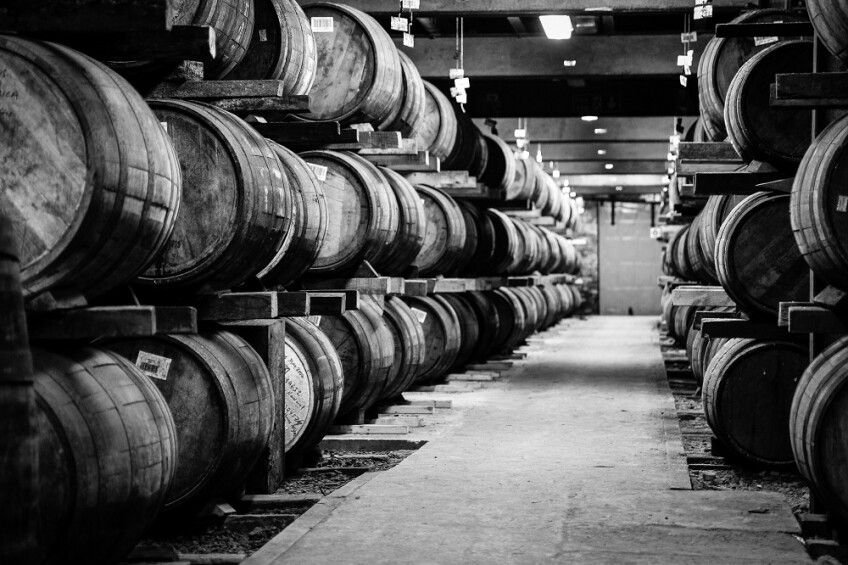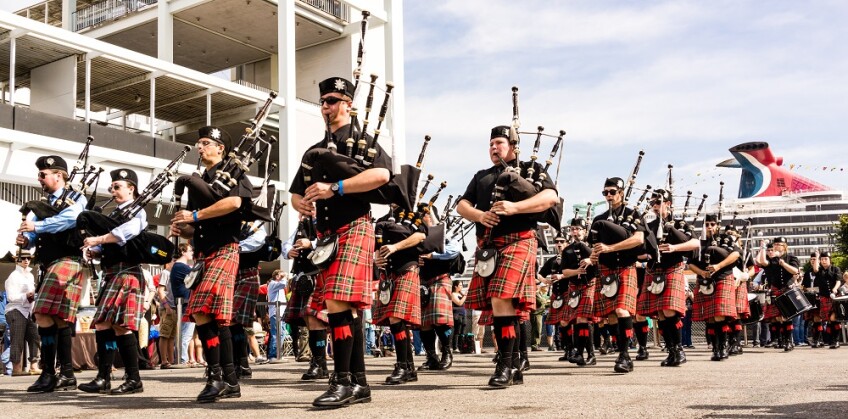St. Andrew's Society: Bringing Scottish Tradition to Southern California

From tartan to whisky to the poet Robert Burns to Highland dancing, bagpipe bands and Highland games; you might not know Southern California has a long history of celebrating Scotland and its culture.

One of the earliest advocates of Scottish culture in Southern California is the Saint Andrew’s Society, established in 1930, by two prominent Southern California Scotsman, James Loudon and Alexander S. Cowie. It is considered the oldest organization of its kind and the society has been aiding and supporting their mission to support charitable causes and the preservation and advancement of Scottish culture, since that time.
They continue to do so today by hosting a variety of events throughout the year and supporting groups like the Associated Judges and Teachers of Highland Dancing, the restoration of the Robert Burn’s house, Enable Scotland and National Libraries and Galleries of Scotland. They also give out numerous prizes and trophies at the Highland Games, including the weekend long event in Costa Mesa organized by the United Scottish Society.
The first Saint Andrew's Society, founded in colonial times in 1729, in Charleston, South Carolina was created to advance charitable causes, promote Scottish culture and help new Scottish immigrants with jobs, housing and education. It was followed by a handful of other Saint Andrew's Societies including Savannah, New York, Philadelphia and San Francisco and eventually Los Angeles.
According to Ian J. Scone-Rees, President of the Saint Andrew’s Society of Los Angeles, the commitment to charity and advancement of culture has changed very little since its inception. It began with about sixty members. “If it seems like a small number, it is,” he said noting that you had to be 100% Scottish to belong. “Today we have over 350 active members and we carry on the same mission, with the exception that you don’t have to be 100% Scottish.”
Over the years, the group became less rigid and admitted members with some Scottish ancestry. Eventually, it changed again by opening the group to anyone interested in Scottish culture and history. And although the organization is named after the Patron Saint of Scotland, it is not a religious organization, and it is not connected with any clan.

According to U.S. census data, there are an estimated 5,000,000 people residing in the state of California with some Scottish ancestry.
Donnie Jack, the Scottish Affairs Counsellor for the Americas/British Embassy based in Washington D.C., maintains there is a groundswell of Scottish pride in Southern California. “The enthusiasm people here have for Scotland and all things Scottish is an amazing thing to see,” he said. “It is key in the preservation of the culture, and often I see more excitement here than I do back in Scotland.”

In January, Robert Burns, the Scottish poet of legend is celebrated all over Southern California at numerous dinners and parties. There is even a California state tartan, the quintessential Scottish fabric with criss-crossed and vertical bands. It was officially introduced in 1998 and inspired by the Muir Family Tartan. J. Howard Standing, the former president of the Saint Andrew’s Society was behind the initiative. According to the societies website, the tartan’s blue reflects the sky, the Pacific ocean and the rivers, while the green reflects the sierras, fields, forests, mountains and parks. The red, gold and blue signify the arts, sciences, and industry of the people of the State of California. The tartan is registered by The World Registry of Tartans, The Scottish Tartans Authority, The Scottish Tartans Society and entered in the The Registry of All Known Tartans. It was enacted by the California Assembly unanimously, and signed by Governor Gray Davis in 2001.
There are three prominent Highland Games that take place close to Los Angeles: The Queen Mary Scotsfest in Long Beach which occurs in February, The Seaside Highland Games in Ventura which takes place in October and Scotsfest in Costa Mesa which is held over Memorial Day weekend.
“The west coast is not always the first place you think there might be such an interest in Scottish culture, in fact I think a lot of people find it downright surprising,” said Chris Lamberton, Chairman of the Saint Andrew's Society of Orange County and Founder and Executive Director of the Scottish Clan and Tartan Information Center. “But we have tremendous turnouts for our Highland Games and other Scottish cultural events and the interest just seems to keep growing.”
He claims that many people find an area of interest and become highly focused; whether it’s Highland dance, bagpipes in a band or solo, the heavy athletics or the clans and the history of Scotland. “It is not unusual for people to enter into the different areas of interest thinking that they have little or no Scottish heritage,” he said. “But often, after really doing the proper research they find out they do, and it’s really in their blood.”
But whether it’s in your blood or not, the thirst for knowledge about all things Scottish even trickles down to liquor. Scottish whisky (In Scotland whisky is spelled without the “e”) and the interest in the history along with the collecting and making of Scottish spirits is on the rise nationally, and has been incredibly popular in Southern California as well, with tastings and lectures happening around the city regularly.

And art forms like Highland dance has become competitive internationally. “Highland dancing attracts everyone, not just people with Scottish descent,” said Sharon Farrar, owner of the Highland Dance School. Farrar, who still teaches and also judges across the country, has fostered many world champions over the years. “I think people love the music first and then they see the dance and they want to be part of it,” she added, noting that most of the young dancers today represent a wide variety of ethnicities and cultures. “This dance form is highly athletic and the dances tell stories — there is history and preservation of the Scottish culture in every step, even if the dancer doesn’t have Scottish ancestry per se.”
Steve Busch, a bagpiper who often performs at Saint Andrew’s events as well as weddings and funerals grew up in Ventura and started playing the bagpipes when he was 16. He took lessons, belonged to numerous bands and eventually became a soloist. He estimates there are over twenty organized and registered bagpipe bands in the Los Angeles area and many more that play on their own. In his experience, only about half of the bagpipers he knows have Scottish heritage. “The Scottish people have done a tremendous job preserving their culture and promoting it,” he said. “But in a place like Southern California, it really is the uniqueness of the culture that attracts people and inspires them to take part,” he added noting that he was fascinated by the pipes first and only later learned that he had some Scottish ancestry.
“There is a great treasure trove of Scottish culture here in Southern California,” Skone-Rees said. “It is our hope that more people will take part in the events we all have to offer and help preserve this amazing culture.”

Visit the St. Andrew's Society website to learn about upcoming events.
KCET partnered with St. Andrew's Society and the WHISKY GALORE event to promote the third season of detective drama SHETLAND which airs Sundays at 9pm.
Isle of Today Iced Tea
- 1.5 oz Alexander Murray & Co Bon Accord
- 0.5 oz fresh lemon juice
- 0.25 oz honey water
- 1.5 oz chamomile tea
Top image: St. Andrew's Cathedral. | Courtesy of Lawrence OP/Flickr/Creative Commons License


